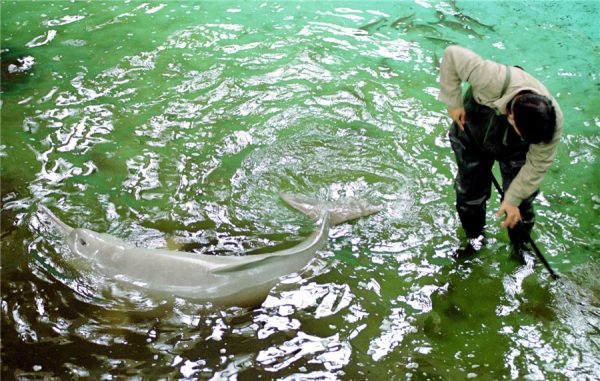The baiji is believed to be extinct, but some observers claim to have sighted the freshwater mammal as recently as last month, as Luan Xiang reports for Xinhua China Features.
More than a decade has passed since the baiji was declared “functionally extinct.”
Yet a recent image believed to show the long-missing “Goddess of the Yangtze River” has sparked hopes for the mammal’s reappearance as Asia’s longest waterway recovers its ecological vitality.

Many observers believe the dolphin, a unique freshwater species only found in the middle and lower stretches of the Yangtze, is now extinct in the wild.
However, some environmental scientists have never stopped believing that somewhere within the vast drainage area of the world’s third-longest river a few remaining members of the rare species may be fighting for survival, far from human activity.
Earlier this month, the China Biodiversity Conservation and Green Development Foundation released a photograph of a creature resembling a baiji taken in April on a stretch of the Yangtze near Wuhu in the eastern province of Anhui.
Previously, two reports had circulated of fishermen spotting a small pod of the blueish-gray mammals that contained both adults and calves.
Rising optimism
The foundation claimed that several researchers who have worked closely with the baiji or specialize in studying it have confirmed that the creature shown in the image was a surviving specimen.
“Though the baiji is very likely to have become extinct in the wild, the possibility remains that a few last surviving specimens could still be out there,” said Wang Kexiong, a professor at the Institute of Hydrobiology of the Chinese Academy of Sciences in Wuhan, Hubei province.
The institute said it would be imprudent to identify the creature in the photograph without further evidence. Nevertheless, some observers said it is too soon to label the species “extinct”.
The proof goes beyond just one image, according to Su Fei, director of the Baiji Program at the foundation. For three years, the organization has been organizing observation trips in the hope of sighting the Yangtze’s unique freshwater dolphin.
In May last year, several observers claimed to have witnessed the elegant mammal.
The baiji does not live in isolation, according to Li Xinyuan, an investigator and baiji enthusiast who was present when the photo was taken last month and described the encounter as “extremely emotional”.
“For two days straight, our teammates witnessed the baiji, but it was gone before they could press the (camera) shutter. On the third day, the photographer Jiao Shaowen decided to use a camera lens rather than binoculars to observe the surface of the water, so he was able to take the shot the instant the baiji emerged,” said Li, who led an ex-situ, or “off-site”, conservation project on the mammal in the 1980s.
He believes that if a baiji was actually spotted, it’s likely that a small pod was swimming nearby.
“It is noticeable that the river’s water quality and ecosystem have improved in recent years, thanks to State-led protection efforts,” he said.
He added that many observers are optimistic about a reappearance of the baiji if the environmental improvement continues


